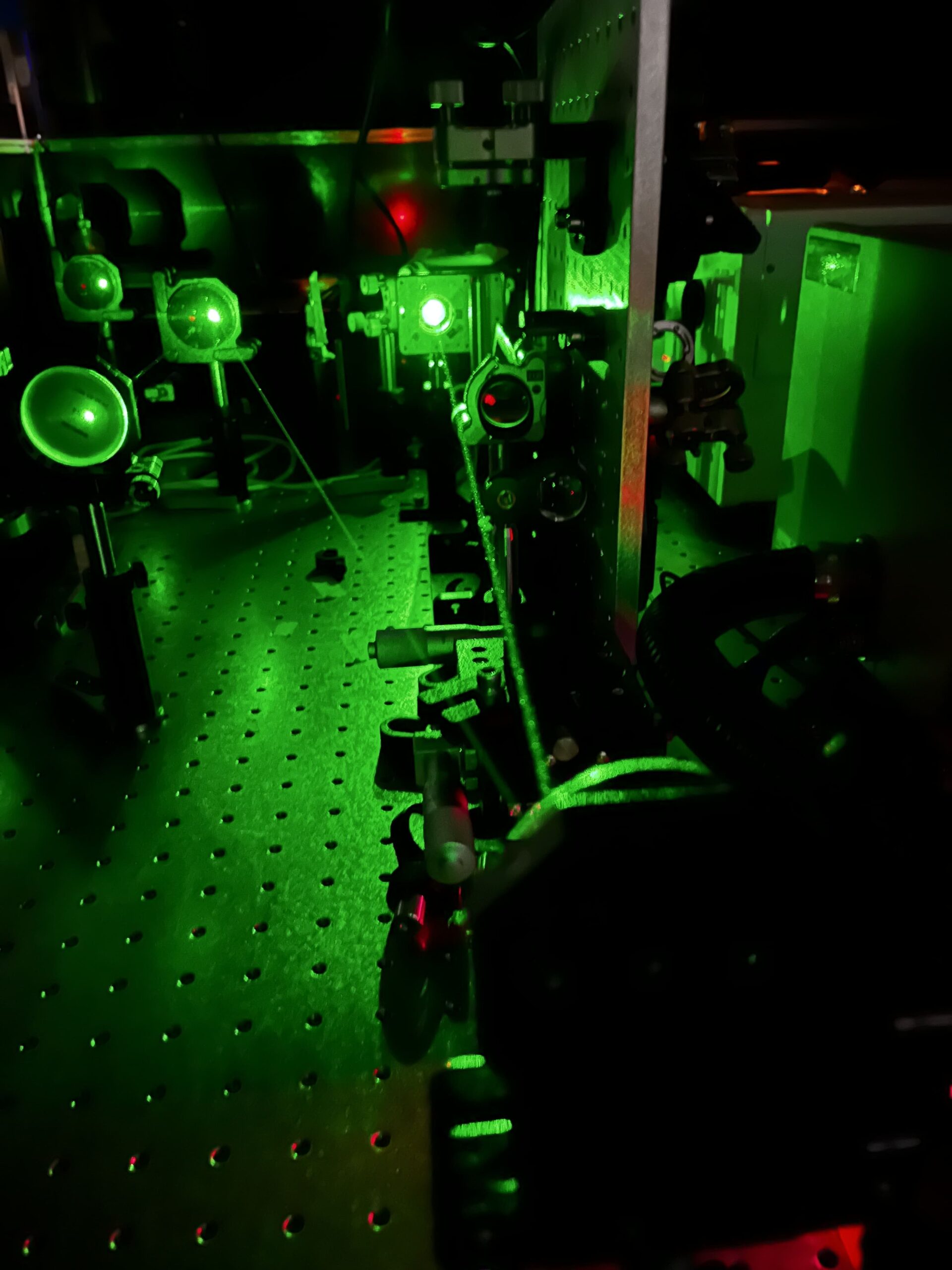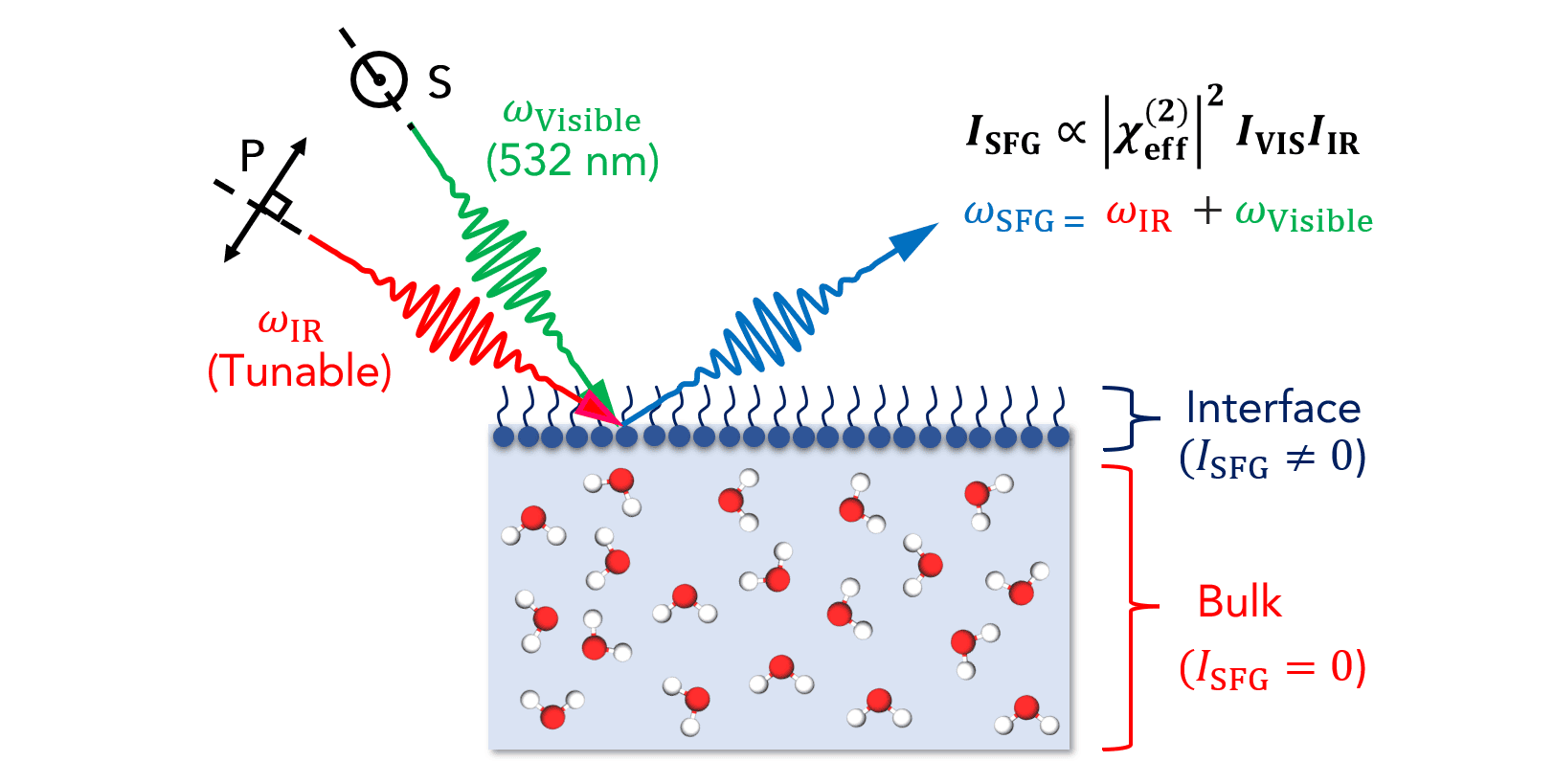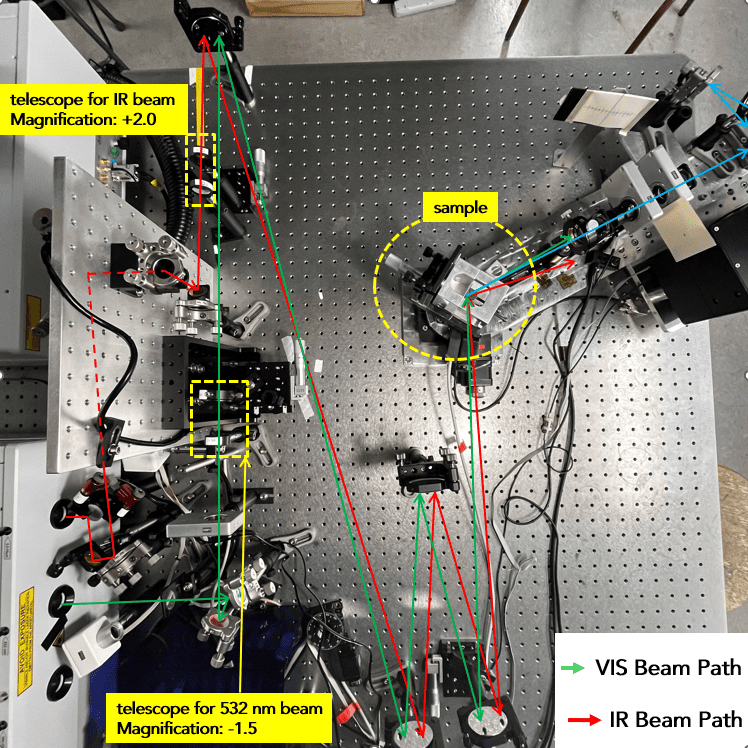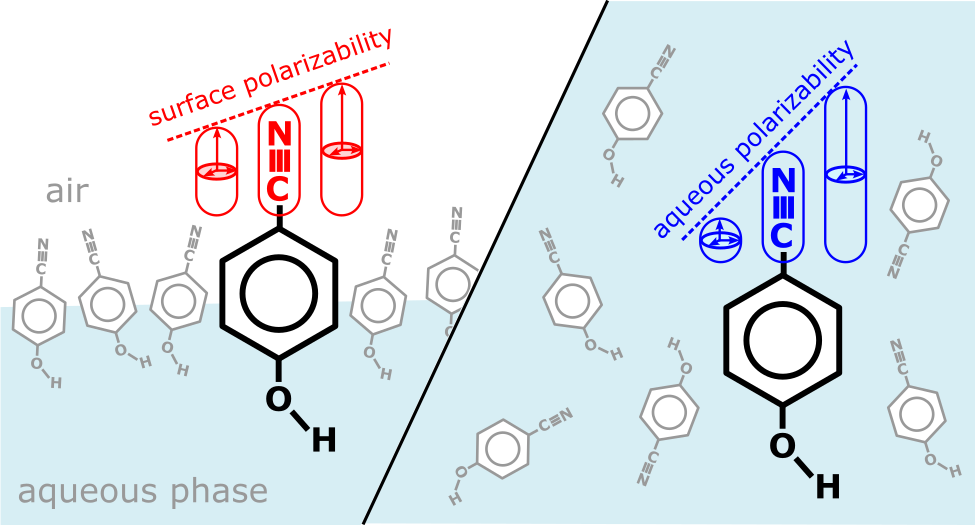publications
Surface populations as a model for the distance-dependence of the interfacial refractive index
Published on: The Journal of chemical physics
Publication date: 20240807
Second-Order Nonlinear Optics as an Orientation-Independent Probe of Molecular Environments at Interfaces
Published on: journal
Publication date: 20250711
My Contribution
I conducted this research as a PhD candidate at the University of Victoria, British Columbia. Beyond contributing valuable insights to the field of surface science, this project allowed me to refine my expertise in instrumentation, data analysis, and scientific communication.
Introduction: A Challenge in Molecular Science
When studying molecules at surfaces—such as those found in biological membranes, industrial coatings, or environmental interfaces—scientists typically rely on techniques that assume a fixed molecular orientation. This poses a significant challenge because:
- Molecules at surfaces often adopt different orientations, making data interpretation complex.
- Traditional techniques, such as Sum-Frequency Generation (SFG) Spectroscopy, require knowledge of molecular alignment to extract meaningful insights.
- If we could find a way to study molecular environments without depending on orientation, we could gain new insights into material properties, chemical reactions, and biological processes.
Our study challenges the conventional approach by showing that we can extract critical molecular information from nonlinear optical signals without knowing molecular orientation. To demonstrate this, we investigated p-cyanophenol at the air-water interface, using SFG spectroscopy and Raman depolarization ratio measurements.
Background: How Light Interacts with Molecules at Surfaces

To understand how we solved this problem, we need to look at how light interacts with molecules at interfaces.
What is Sum-Frequency Generation (SFG) Spectroscopy?
- SFG spectroscopy is a nonlinear optical technique used to study surfaces and interfaces. It works by sending two laser beams (infrared and visible) at a molecular surface.
- If the molecules at the surface lack inversion symmetry, they generate a unique optical signal.
- This signal provides information about molecular structure and orientation at the interface.
The Challenge with SFG
- The SFG signal is influenced by molecular alignment, electronic structure, and surface number density—all at the same time.
- Traditional methods require us to extract orientation before we can analyze the molecular environment.
- Our goal was to develop a method that removes this dependence on molecular alignment.

The figure shows the basic principle of Sum-Frequency Generation(SFG). Sum-Frequency Generation spectroscopy is a nonlinear optical technique where a fixed visible laser and a tunable infrared (IR) laser interact at a surface, generating a sum-frequency signal that reveals molecular structure and orientation. Sum Frequency Generation (SFG) occurs only when the material’s centro-symmetry is broken.
Our Approach


Our work primarily revolves around sum frequency generation spectroscopy, along with Raman and infrared spectroscopy.
What sets our approach apart is a strong emphasis on custom-built instrumentation. Instead of relying solely on commercial systems, we work hands-on in designing and building our own setups, which we control directly through Python programming language. This DIY and programmable approach gives us the flexibility to tailor high-end spectroscopic instruments precisely to our experimental needs.
On the right is the commercial picosecond scanning Sum Frequency Generation (SFG) vibrational spectrometer (EKSPLA), and our custom-built optical configuration designed specifically to probe buried interfaces. By combining high-end commercial components with tailored optical design, we achieve the precision and flexibility required for specific tasks.
Methodology: A New Experimental Approach
To test our hypothesis, we designed an experiment where we could separate molecular orientation effects from electronic structure measurements.
- Sample preparation: We prepared a solution of p-cyanophenol (75 mM) in water and studied its behavior at the air-water interface.
- Spectroscopic analysis: We performed Raman depolarization ratio measurements to analyze the molecular polarizability. We then used SFG spectroscopy with three different laser polarization schemes (SPS, SSP, PPP). This allowed us to isolate signals related to molecular environment and electronic structure while removing orientation-dependent effects.
- Mathematical modeling: Using established optical models, we analyzed how refractive index variations at the surface influenced the measurements. We applied a surface volume mixing model to determine how molecular interactions affected electronic properties.
Key Findings: A New Way to Study Interfaces
Our results demonstrated that we could successfully extract electronic structure information without needing molecular orientation data.
Main Discoveries
- The C–N bond polarizability at the interface differs from that in bulk solution.
- Molecules at the surface experience different electronic environments compared to those in the bulk.
- SFG can be used to study molecular properties independently of their orientation.
- This is a fundamental shift in how we analyze molecular surfaces.
- Interfacial electronic structures are more homogeneous than previously assumed.
- This suggests that past studies relying on orientation-dependent models may need revision.
Real-World Applications
By removing the need for molecular orientation analysis, our approach can revolutionize several scientific fields.
- 🌍 Environmental Science:
- Understanding how pollutants interact with water surfaces.
- Studying the molecular behavior of aerosols in the atmosphere.
- 💊 Pharmaceuticals & Biochemistry:
- Examining how drugs interact with biological membranes without orientation assumptions.
- Studying lipid layers and protein interactions more accurately.
- ⚙️ Materials Science & Engineering:
- Designing better coatings and surface treatments.
- Developing self-assembling materials and nanotechnology innovations.
Conclusion: A New Way to Study Molecular surfaces
Our findings can be used to accurately study protein interactions at interfaces, investigate water structure at biological and environmental surfaces, and analyze molecular behavior in coatings, membranes, and nanomaterials.
Key Takeaways
- We proved that SFG can be used to extract electronic structure details without requiring molecular orientation data.
- Our findings challenge previous models that assumed orientation dependence was necessary for meaningful surface analysis.
- This technique could be widely applied in chemistry, physics, and materials science to develop new technologies and improve our understanding of molecular interactions.
What’s Next?
Our work opens new doors for future research. Next steps include:
- Extending this technique to biological surfaces, such as cell membranes.
- Applying it to detect contaminants and pollutants in water and air.
- Using it to study interfaces in advanced materials, including nanotechnology and semiconductor coatings.


